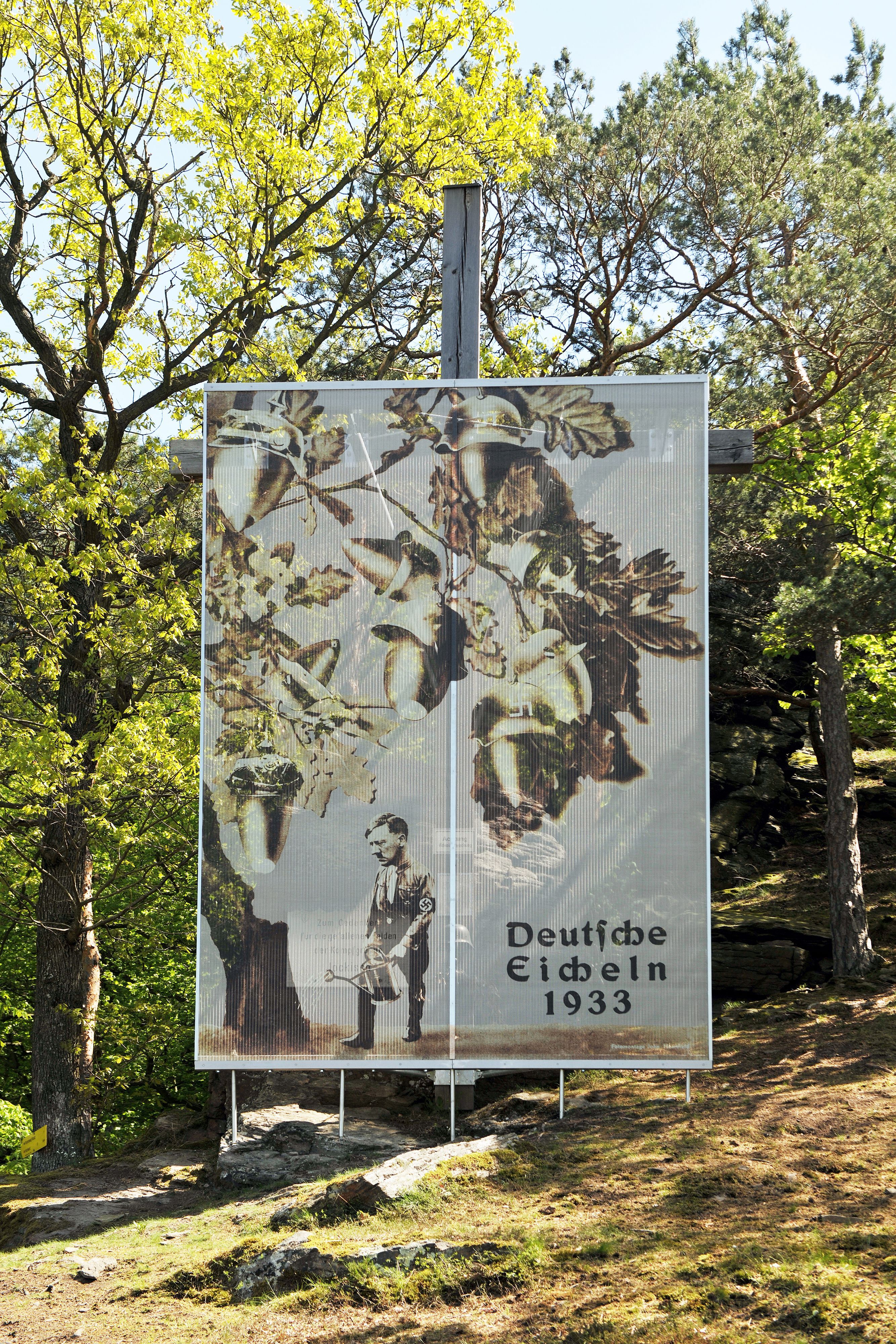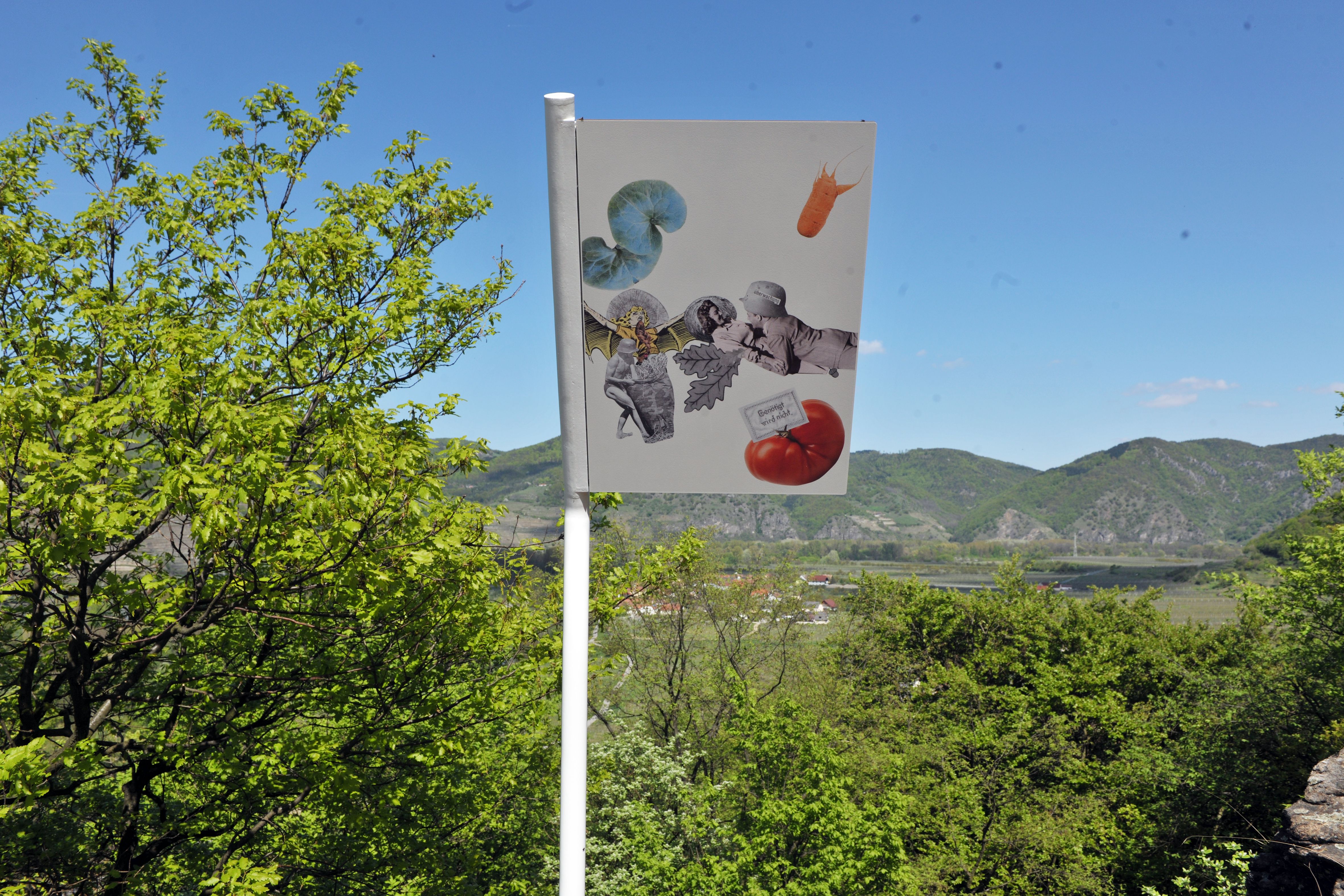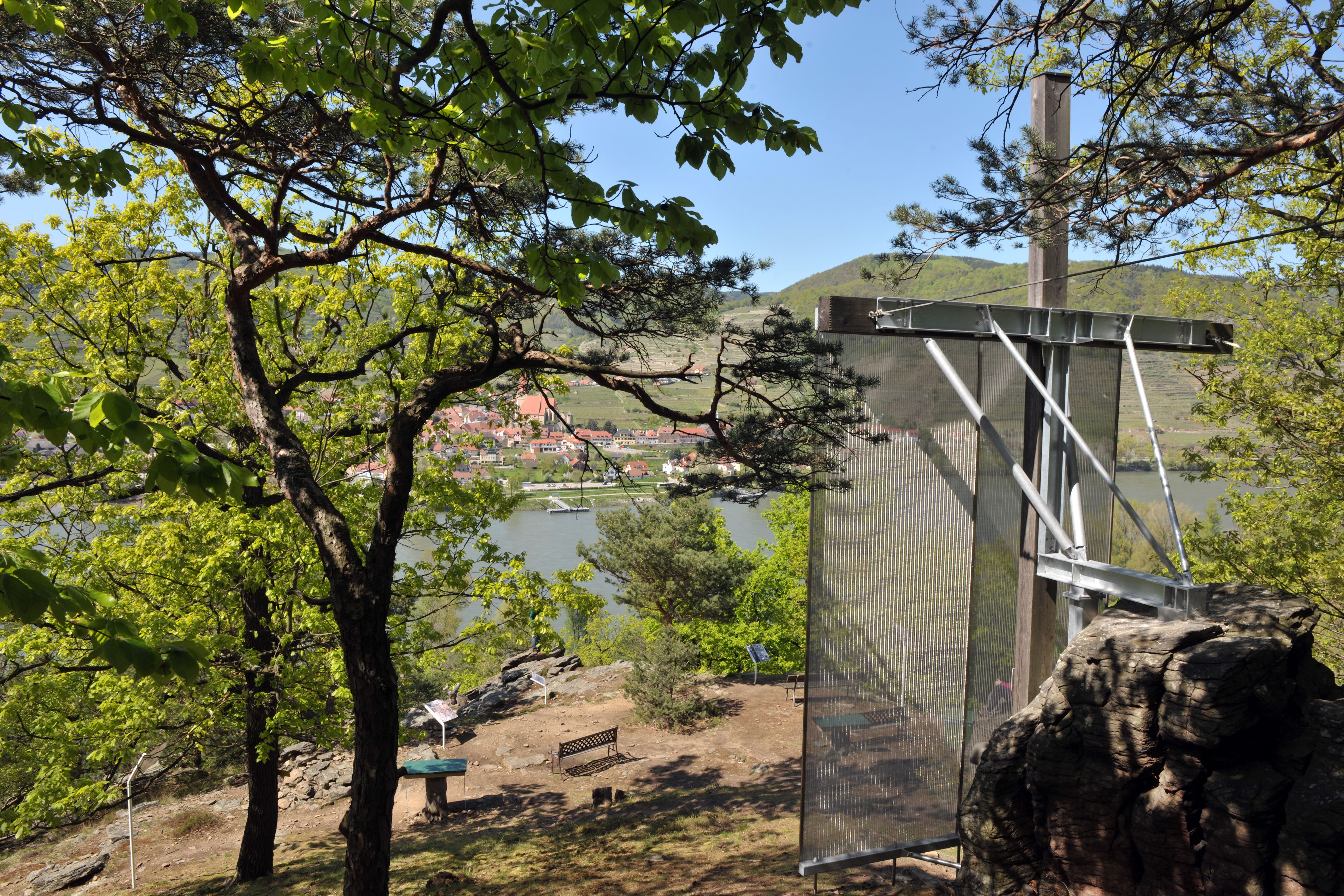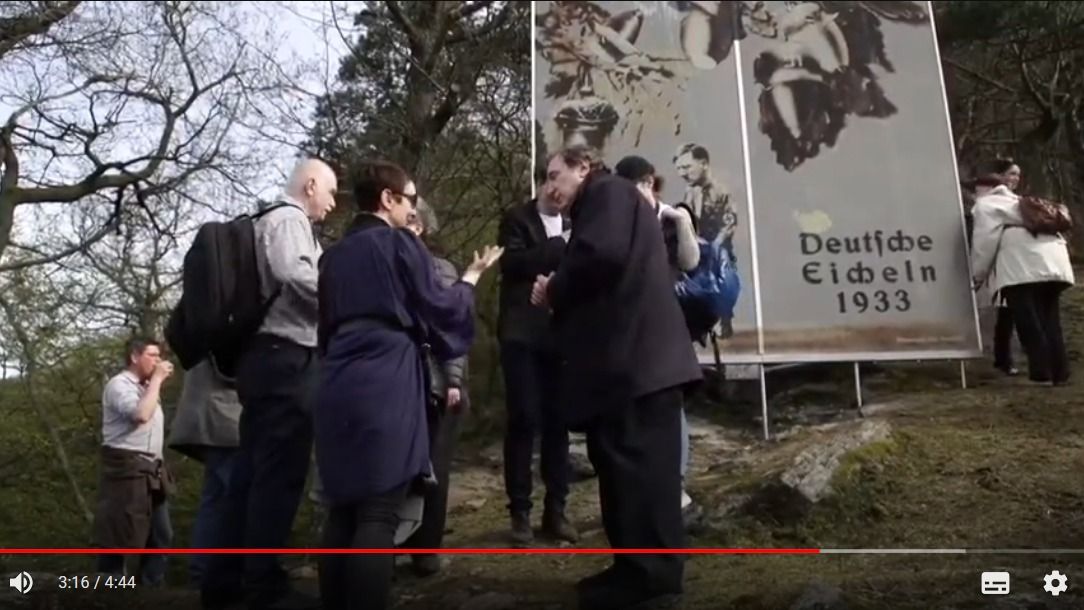Martin Krenn
:
Mahnmal Friedenskreuz St. Lorenz
Back
Information
In the 1960s, a Cross of Peace was erected above St. Lorenz, near what is now the Wachau World Heritage Trail (Welterbesteig Wachau). The cross is dedicated to the Jockisch Combat Team (Kampfgruppe Jockisch), a unit of the German Wehrmacht that fought in the Second World War in what is today Croatia, Bosnia-Herzegovina, and Belarus. In-depth research by the historians Gregor Kremser and Robert Streibel has revealed that this reserve division primarily trained recruits at the beginning of the war, but starting in 1943 it became involved in almost daily combat with partisans. During these actions, entire villages were burned down, hostages were seized, and civilians were murdered as “retaliation measures.” Recently, the character of this site has also changed through unmistakable symbols being attached to the cross: a Wehrmacht helmet and a laurel wreath. As a result, a competition to redesign the site was initiated, which was won by the artist Martin Krenn.
The Mahnmal Friedenskreuz St. Lorenz (St. Lorenz Cross of Peace Memorial) is a conceptual work consisting of two parts: a large transparent metal screen placed half a meter in front of the cross, and five works by high school students that are loosely arranged around the cross. The cross and the screen, on which Martin Krenn printed John Heartfield’s photomontage Deutsche Eicheln 1933 (German Acorns 1933), form a unit that is the centerpiece of the monument. Heartfield was a key figure of the genre of political photomontage. In this work made the same year the Nazis came to power, he mocks the Nazis’ self-aggrandizement by using the German oak tree as a symbol of the danger of the coming war inherent in the armament of the Wehrmacht. This montage, which Heartfield made for the back cover of the Berlin magazine Arbeiter Illustrierten Zeitung (AIZ, 1933, Vol. 12, No. 37), shows a small Hitler watering an oak tree. The image speaks for itself: The trunk of the German oak that towers over the dwarfish Hitler hardly seems able to hold its mighty fruit and is tilting out of the image as if it were beginning to break.
The translucent metal screen is at the core of Krenn’s artistic concept: Depending on each beholder’s perspective and the lighting conditions, visitors can acquire different visual impressions of the photomontage, the cross behind it, the added devotional objects, and the natural surroundings. Because John Heartfield’s forewarning 1933 montage also depicts a helmet with a swastika drawn on it in as well as a gas mask that reminds us of the devastating gas warfare of World War I, these objects add a satirical layer to the devotional additions installed there by unknown admirers. The artistic concept was thus not to change the cross’s contemporary format, but rather to question it and comment on the ensemble. The second part of the new monument design consists of five collages that were designed by high school students from Krems, who took a 6-month workshop with Martin Krenn and Gregor Kremser. The students were asked to create their own interpretations of Heartfield’s political photomontage. In their collages, they explored how history is dealt with, as well as the meaning of anti-fascism in the Nazi era and today. As a whole, the installation encourages us to engage with the site and its historical circumstances. By contextualizing Friedenskreuz St. Lorenz with Heartfield’s statement, Martin Krenn transforms the site into a memorial against the glorification of war and fascism while creating an homage to civil courage.
(Cornelia Offergeld)







